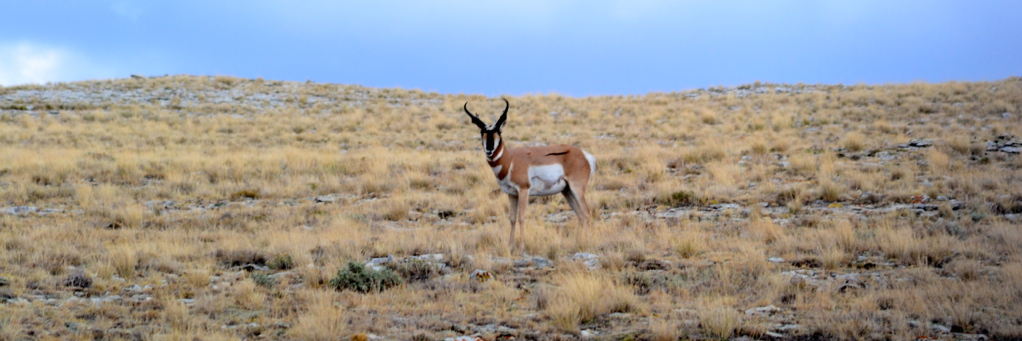On Tuesday, I sat in a half-empty ballroom in a Holiday Inn in Cheyenne, Wyoming, and watched oil companies buy up 60,000 acres of wild land to drill and frack for private profit.
It was the Bureau of Land Management’s (BLM) quarterly lease sale, and for their staff and the auction team it was business as usual, just another day on the job. The ballroom was quiet save for the auctioneer’s rapid-fire announcements and fifteen land men’s murmured bids. As far as they were concerned, the sale was uneventful.
For me and the local leaders I was there with, the sale was an outrage. Rainforest Action Network went to bear witness with about a dozen activists from the Unitarian Church in Laramie, WildEarth Guardians, and the broader Cheyenne community. Before the auction we held a peaceful protest on the public sidewalk, with one clear message: leasing our public lands to fossil fuel companies has to end.
The sale looked and sounded like a cattle auction, with the announcer barking out lot numbers and opening bids as quickly as he could. All we heard were the number of parcels sold and the amount of money collected. The scene felt like something from days long ago—days that have since passed. The auction of our public lands felt like yet another remnant of an outdated system.
These days, the costs of an acre of land are at rock bottom, red tag clearance prices—nine of the forty parcels went for $2 an acre.
$2 AN ACRE. That’s the federal minimum for bids and on these parcels, that was the winning bid. What can you buy nowadays for $2? A pack of gum? A cookie? Yes—or you can buy an acre of land near Kemmerer in Wyoming’s Red Desert.
The disconnect: within an hour, 60,000 acres were bought and sold and condemned for industrial development. There was no acknowledgement of what was actually being auctioned off—it was all just numbers on a page. There was no discussion about the taxpayers who technically own these lands, the inherent value of wild space, the need for carbon sinks, or that this land is prime habitat for an endangered bird, the sage grouse.
There was no glimpse of recognition of the problems that additional industrial development will bring to Wyoming and to the country.
The BLM tracked the leases and the money made, but they have no mechanism to include the true costs of these sales: the increase in climate change emissions. The costs of droughts and floods. The negative impacts on plant and animal agriculture. The cost of care for public health. This out-of-date and short-sighted thinking is dangerous for families now and our future generations.
When it comes to climate change, Wyoming has great power—and great responsibility. The state’s Powder River Basin coal mines and countless active gas patches mean it has a tremendous decision-making burden. Wyoming, which rightly prides itself on its beautiful wild places, is becoming increasingly more industrialized and dependent on the carbon economy.
Tuesday’s lease sale is just the latest episode in a vicious cycle of destruction and debt. According to a recent Wyoming National Public Radio report, “There are so many orphaned wells, it could cost up to $30 million over the next decade to clean them all up.” While $2 may sound cheap, someone is going to have to pay the real costs and I guarantee you that the industry—Texan oil companies like Anadarko and Exxon—aren’t going to be volunteering any funds. It’s going to be the people—homeowners in insurance damage from floods, farmers in loss of crops or cattle, the state—paying out of pocket to clean up abandoned wells.
It’s time to keep fossil fuels in the ground.
